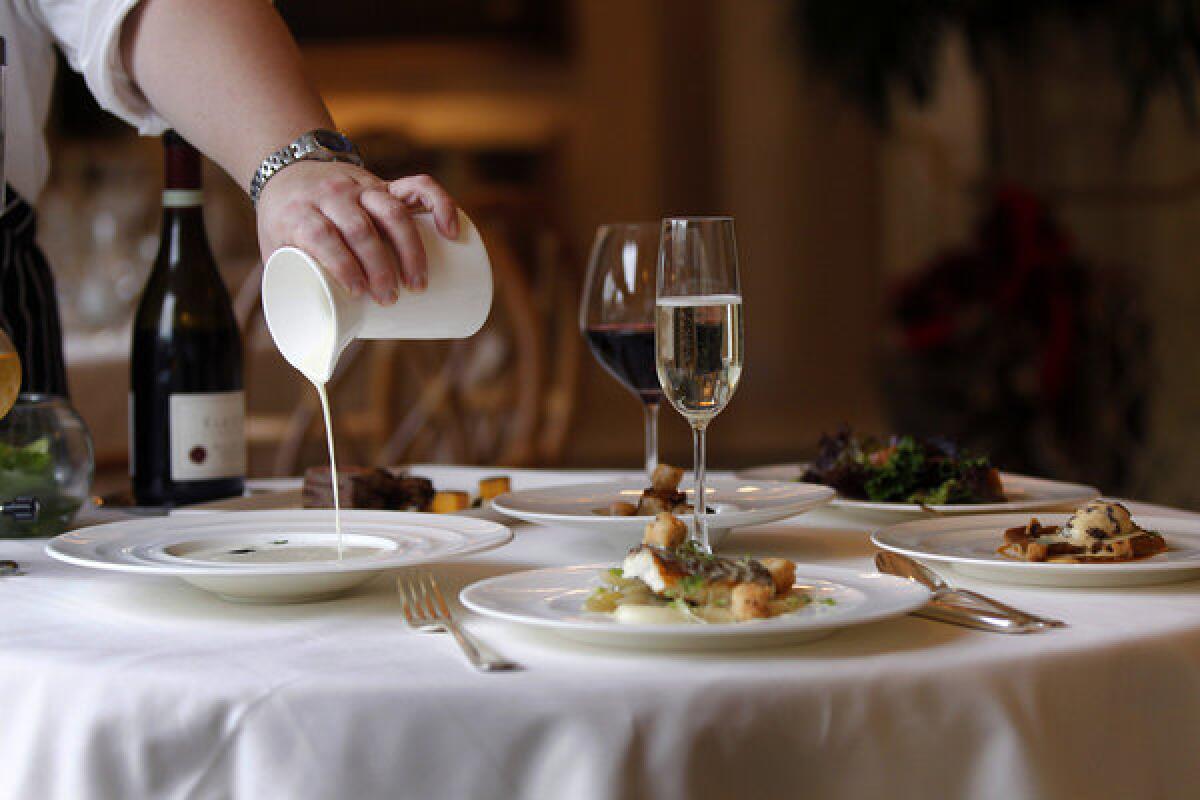Restaurants 2013: Sales to exceed $660 billion, challenges loom

- Share via
The American restaurant industry is headed into a year full of obstacles, including health coverage costs related to “Obamacare,” employee turnover, rising food costs and weak consumer spending.
Still, the National Restaurant Assn. predicts that the country’s 980,000 eateries will pull in more than $660 billion in sales in 2013 – or 3.8% more than this year’s revenue stream. If the forecast is accurate, restaurants will enjoy four consecutive years of real sales growth.
The industry will employ 13.1 million people in 2013, or 10% of the total American workforce, according to the Tuesday report. That’s a 2.4% rate of employment growth, which is slower than the 3% pace set by restaurants this year but still much higher than the overall 1.4% rate among all employers.
Over the next decade, the association expects restaurants to hire 1.3 million new employees, bringing the total foodservice workforce to 14.4 million by 2023.
QUIZ: How well do you know fast food?
But the surge in workers means a shallower labor pool. Long-running restaurant industry problems, such as the difficulty in recruiting and retaining employees, will likely be exacerbated, according to the association’s forecast.
And many restaurant owners worry that once President Obama’s healthcare reform goes into effect in 2014, their slim margins will be even more squeezed. Major eatery businesses such as Papa John’s and Olive Garden parent Darden have started fretting about the requirement to provide access to coverage for all full-time employees.
And the aftershocks of a severe summer drought will continue inflating wholesale food and beverage costs, already high after several years of increases and responsible for sucking up a third of restaurants’ sales, according to the restaurant group.
The tepid economy and continuing high unemployment still gives consumers second thoughts about their discretionary spending. Nearly half of Americans say they don’t patronize restaurants as often as they’d like.
“To be successful, restaurants need potential patrons to feel good about their economic prospects,” said Jimmy Haber, managing partner of ESquared Hospitality, which owns restaurants such as BLT Steak LA. “The fiscal cliff will bring higher taxes, uncertainty in the workplace and fears of another recession, just to name of few of the effects. The current ‘feel good’ index will fall, which will undoubtedly create downward pressures in restaurants and in the hospitality business as a whole.”
Eateries will also have to struggle with evolving diner preferences in 2013.
More consumers say they want table-side electronic payment options, mobile ordering systems, self-order kiosks, tablet menus and smartphone apps for reservations. Currently fewer than one in 10 restaurants have such capabilities, but more than half told the restaurant association that they’re investing in new technologies next year.
And more than seven in 10 consumers say they’re looking for more healthful and locally sourced menu items at restaurants -- a trend that even industry giants such as McDonald’s have been hustling to follow.
ALSO:
Seafood fraud widespread in N.Y., probe finds
A pleasant surprise for McDonald’s: Better-than-expected sales
LYFE comes to SoCal with healthful food and McDonald’s pedigree
More to Read
Inside the business of entertainment
The Wide Shot brings you news, analysis and insights on everything from streaming wars to production — and what it all means for the future.
You may occasionally receive promotional content from the Los Angeles Times.











